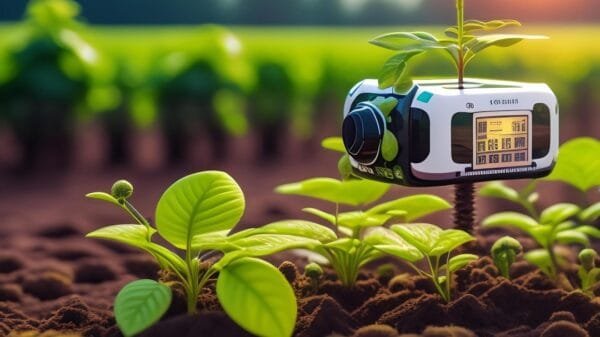California Salmon Fishing Season Closed Again
For the third consecutive year, California’s commercial salmon fishing season has been closed due to critically low numbers of fall-run Chinook salmon in the Sacramento River. This closure, announced by the Pacific Fishery Management Council (PFMC), reflects ongoing environmental challenges that have plagued the state’s salmon populations. The decision highlights not only the ecological impacts on the salmon species but also the political and economic tensions surrounding water allocation in the state. With California’s fishing industry facing continued uncertainty, the closure serves as a stark reminder of the growing environmental pressures and the need for comprehensive conservation strategies.
Declining Salmon Populations and Ecological Concerns
The main reason behind the closure of the salmon fishing season is the alarming decline in fall-run Chinook salmon, a vital species for both California‘s ecosystem and its fishing industry. The Sacramento River, one of the primary spawning grounds for these salmon, has seen a sharp reduction in the number of adult salmon returning to spawn. Over the years, various factors have contributed to the population decline, including rising water temperatures, water scarcity, and habitat degradation. The drought conditions in California have exacerbated these issues, making it difficult for salmon to thrive in their natural environment.
The loss of salmon populations has significant ecological consequences. Chinook salmon are an essential part of the food chain, serving as a key prey species for larger fish, birds, and mammals. Their decline has ripple effects throughout the ecosystem, affecting other species that depend on them for sustenance. Furthermore, salmon are vital for maintaining water quality in rivers and streams, as their migration patterns help oxygenate the water. As the salmon population continues to dwindle, California faces not only the loss of this iconic species but also the broader ecological impacts that could disrupt the state’s aquatic ecosystems.
Impact on California’s Commercial Fishing Industry
The closure of the salmon fishing season for the third year in a row is particularly devastating for California’s commercial fishing industry. Salmon fishing is an important part of the state’s economy, providing jobs for thousands of fishermen, processors, and other industry workers. The Pacific Coast’s commercial salmon fleet, which includes both California-based vessels and out-of-state operators, has faced a sharp decline in revenue due to the ongoing fishing restrictions. With the closure of the salmon season, many fishermen are left without a primary source of income, forcing some to look for alternative employment opportunities.
For the fishing industry, the long-term closure raises concerns about the sustainability of their businesses. The fall-run Chinook salmon is a key target for commercial fishing operations, and its absence has led to financial hardships for many in the industry. Some fishing families, who have been in the business for generations, are struggling to stay afloat amid the continued uncertainty. The government has offered some relief in the form of grants and financial assistance, but the lack of a sustainable salmon population means that many workers face an uncertain future.
Tensions Over Water Allocation in California
The closure of the salmon fishing season is also a symptom of the ongoing water allocation challenges in California, particularly in the state’s Central Valley, where the Sacramento River is located. As the salmon populations decline, tensions over water usage between agricultural interests, urban areas, and conservationists have grown. California’s agriculture sector, which relies heavily on water from the Sacramento-San Joaquin Delta, competes for the same water resources that are essential for maintaining healthy fish populations. The state’s drought conditions further complicate this balancing act, as there is less water available for all sectors, and the allocation decisions have significant implications for both the environment and the economy.
Water scarcity in California is a long-standing issue that has only worsened with climate change. The competition for limited water resources often leads to conflicts between different stakeholders, particularly when it comes to managing water for environmental protection versus economic development. The salmon fishing closure underscores the difficulty of balancing the needs of the fishing industry with the importance of preserving aquatic ecosystems. Environmentalists argue that more water must be allocated to rivers and streams to support salmon populations, while agricultural interests contend that reduced water allocations could hurt food production and economic output.
Government and Conservation Efforts to Protect Salmon
In response to the ongoing decline in salmon populations, various government agencies, including the Pacific Fishery Management Council and the California Department of Fish and Wildlife, have implemented a series of conservation efforts aimed at protecting the species. These measures include restrictions on fishing, habitat restoration projects, and programs to improve water quality in critical spawning areas. The government has also worked to improve fish passage in dams and other barriers that block the salmon’s migration routes. However, despite these efforts, the salmon population has not shown signs of significant recovery, leading some experts to call for more drastic measures.
One approach that has been suggested is the reallocation of water to support the environmental flow needs of the river. This could involve limiting water usage in agriculture or diverting water from other sectors to ensure that sufficient water reaches the salmon’s habitat. However, such measures are likely to face significant opposition from water-intensive industries, particularly agriculture, which is a key driver of California’s economy. The challenge for lawmakers and environmental groups is to find solutions that protect the salmon while also balancing the needs of the state’s diverse sectors.
The Economic and Environmental Toll on California
The ongoing closure of the salmon fishing season reflects both the economic and environmental toll that California is facing as a result of water scarcity, climate change, and habitat degradation. While the state’s commercial fishing industry struggles to survive, the broader impact of the salmon population decline extends to tourism, local economies, and ecosystem services. California’s natural beauty, including its rivers and wildlife, plays a significant role in attracting visitors and supporting local businesses, and the loss of salmon could detract from the state’s appeal as a destination for outdoor enthusiasts and conservation-minded tourists.
Moreover, the decline in salmon populations raises concerns about the long-term sustainability of California’s aquatic ecosystems. If measures are not taken to protect and restore the habitat of the salmon, the state risks losing not only this iconic species but also the broader environmental benefits that it provides. The challenge for California moving forward will be to implement policies that address water allocation issues while ensuring the protection of its valuable natural resources for future generations.
Looking Ahead: What’s Next for California’s Salmon Industry?
The continued closure of California’s commercial salmon fishing season highlights the need for more comprehensive and long-term solutions to address the state’s water management and environmental challenges. While efforts to restore salmon populations are ongoing, significant work remains to be done. Moving forward, collaboration between government agencies, environmental groups, and industry stakeholders will be essential in developing policies that can balance the needs of the environment with those of California’s economy. Until the salmon population is able to recover, the state’s fishing industry will likely continue to face significant challenges, and it will be up to policymakers to find a sustainable path forward for both the environment and the economy.
































